



SELECTED
ISSUE
|
|
Leisure Management - Touchdown

Treatments

|
|
| Touchdown
|

The coronavirus has sparked much interest in spa services which minimise human contact. Megan Whitby takes a look at the innovations which could add a much-needed boost to treatment menus
|

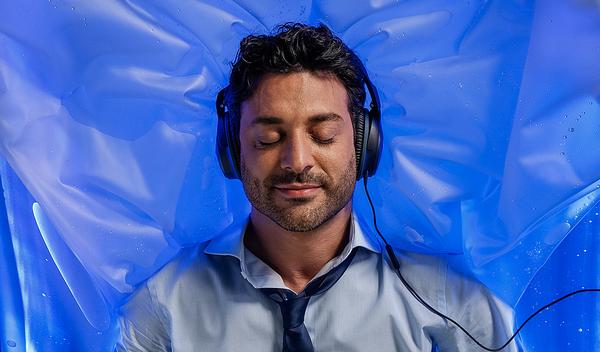
Zerobody is a multi-purpose dry floatation bed which guests can customise
|
|
|
It’s great to see spas starting to reopen following COVID-19 lockdowns. However, the majority of facilities will be offering a pared-down menu and some guests may be keen to return, but uncomfortable with high-touch therapies.
Experts suggest that now is the time to explore new innovations and Spa Business predicts that as trade picks up once more, many owners will be looking at ‘touchless experiences’ – services which require less labour, minimise guest’s exposure to other people and which could add a real point of difference. They typically require a big up-front investment, but providers say there’s potential to increase profit margins in the long-run.
Although the role of therapists in a spa could never be replaced or over-exaggerated, touchless experiences are piquing people’s interest and we’ve rounded up some of the different types of equipment on offer.
|
Starpool
Zerobody
• Italian wellness supplier Starpool offers Zerobody – a multi-purpose dry floatation bed which guests can customise with chromotherapy, a lumbar massage and mindfulness experience via a touchscreen tablet.
• The touchless treatment typically lasts 20-30 minutes and is claimed to ease muscle and joint pain, decrease stress, improve circulation and encourage relaxation.
• Starpool recommends charging a rate of €1 per minute for treatments.
• Zerobody is designed with an eco-leather outfit suitable for deep cleaning and all disinfectant strengths. Added hygiene measures include disposable hygiene sheets for the bed and supplied headphones to be changed between treatments. Combined with preparation, cleaning time adds 15 minutes to treatments.
• If a spa opened for nine hours, Starpool believes 12 treatments could be sold daily and could be packaged with sauna or cryotherapy sessions.
• Cost: €15,000 (US$17,155, £13,694) to €22,000 (US$25,165, £20,082).
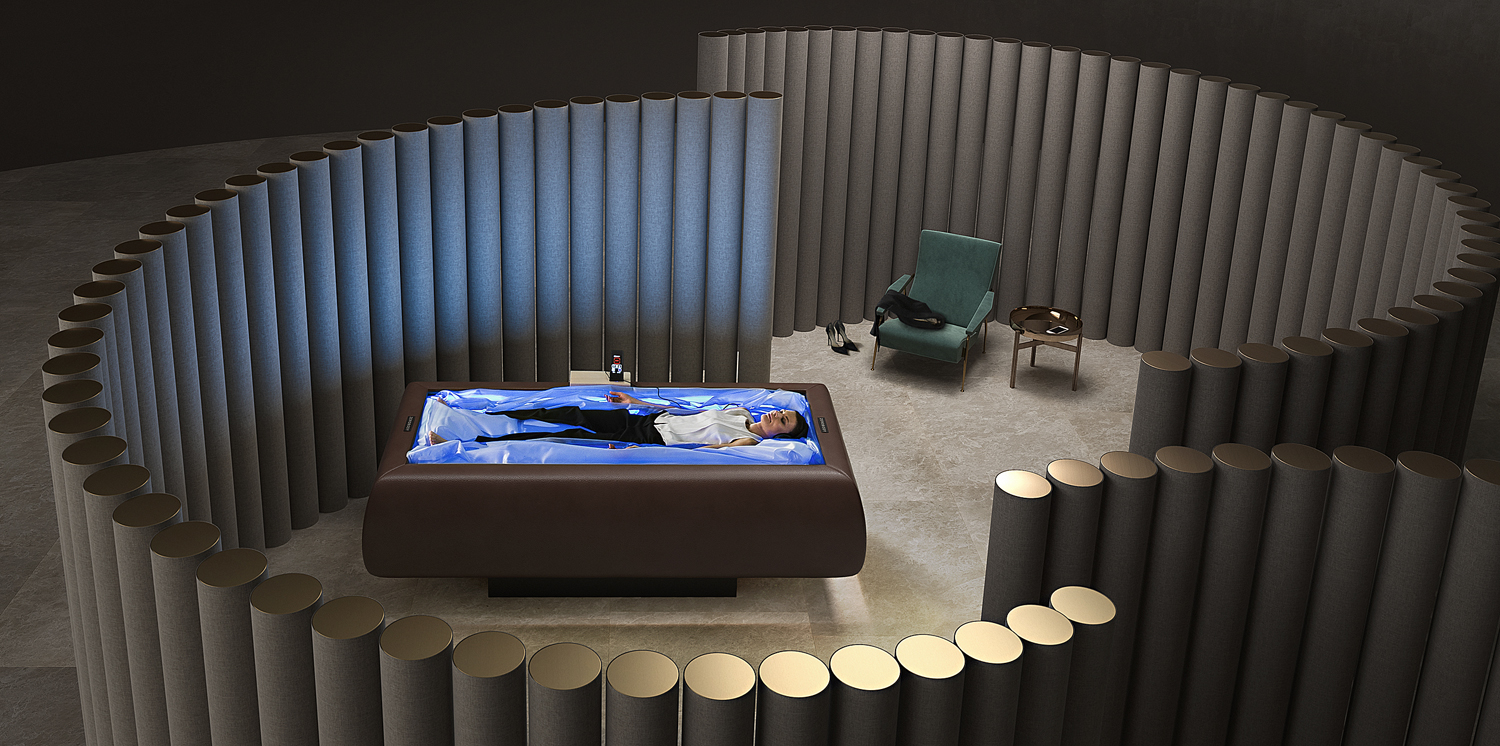
Starpool’s Zerobody floatation can be customised with a lumbar massage and chromatherapy / Photos: STARPOOL
Sensync
Vessel
• Created by immersive wellness company Sensync, the Vessel offers a programmable touchless VR experience delivered in a pod to displace guests from the burdens of their mind. •
During the treatment, guests lie in the pod and use a VR headset to see, hear, smell and feel sensations of nature. •
Proposed benefits include improved attention, stress reduction and mood enhancement. •
Cleaning takes two minutes and requires replacement of disposable face inserts on the headset and all contact surfaces being wiped with disinfectant wipes. The pod is capable of withstanding hospital-grade disinfectant. •
The Vessel offers one 40-minute programme priced at US$135 (€118, £108) or two 20-minute programmes costing US$75 (€65, £60) each. •
Sensync estimates spas could offer eight to 16 treatments per unit per day •
Price: US$98,000 (€85,801, £78,183).
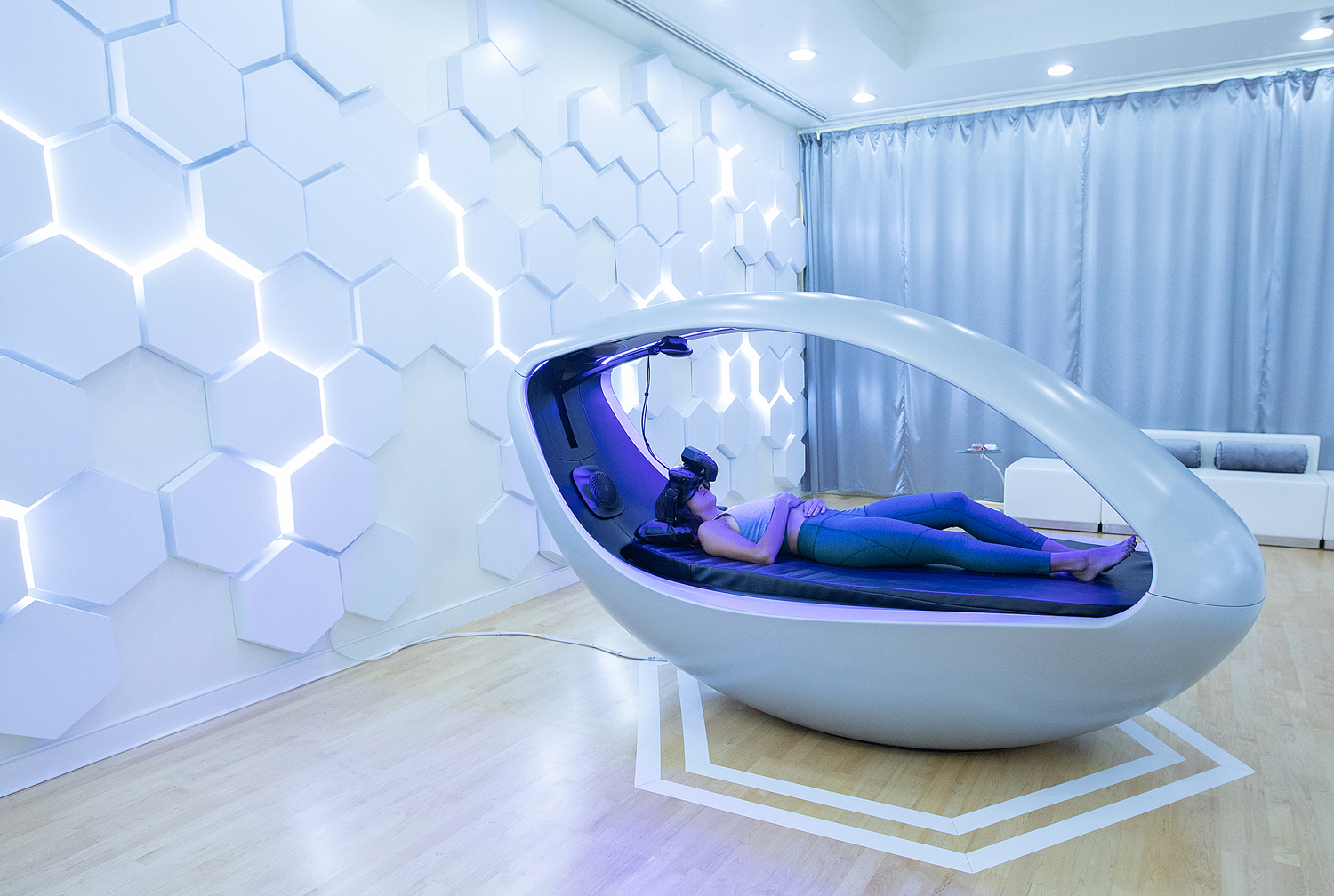
The Vessel offers programmable VR experiences and a 40-minute session costs US$135
Unbescheiden
Hydrotherapy Tub Caracalla
• Unbescheiden, based in Germany, makes the Hydrotherapy Tub Caracalla which provides an underwater massage. •
Operated via touchscreen, guests select from a menu of 10 pre-set treatments, with the option to adjust pressure settings. •
Benefits include muscle relaxation, enhanced in the warm water, and reduction in tension. •
The tub has built-in hygiene options including automatic rinsing or disinfection functions which take five minutes each. •
Treatments last between 20-30 minutes and can range between €30 (US$34, £27) to €80 (US$91, £73) in price. •
Assuming a spa is open for eight hours, approximately 15 treatments can be carried out per day. •
Unbescheiden recommends combining treatments with face and body modalities of all types, for example, shower experiences or further massage and facials. •
Starting price: €20,000 (US$22,866, £18,232).
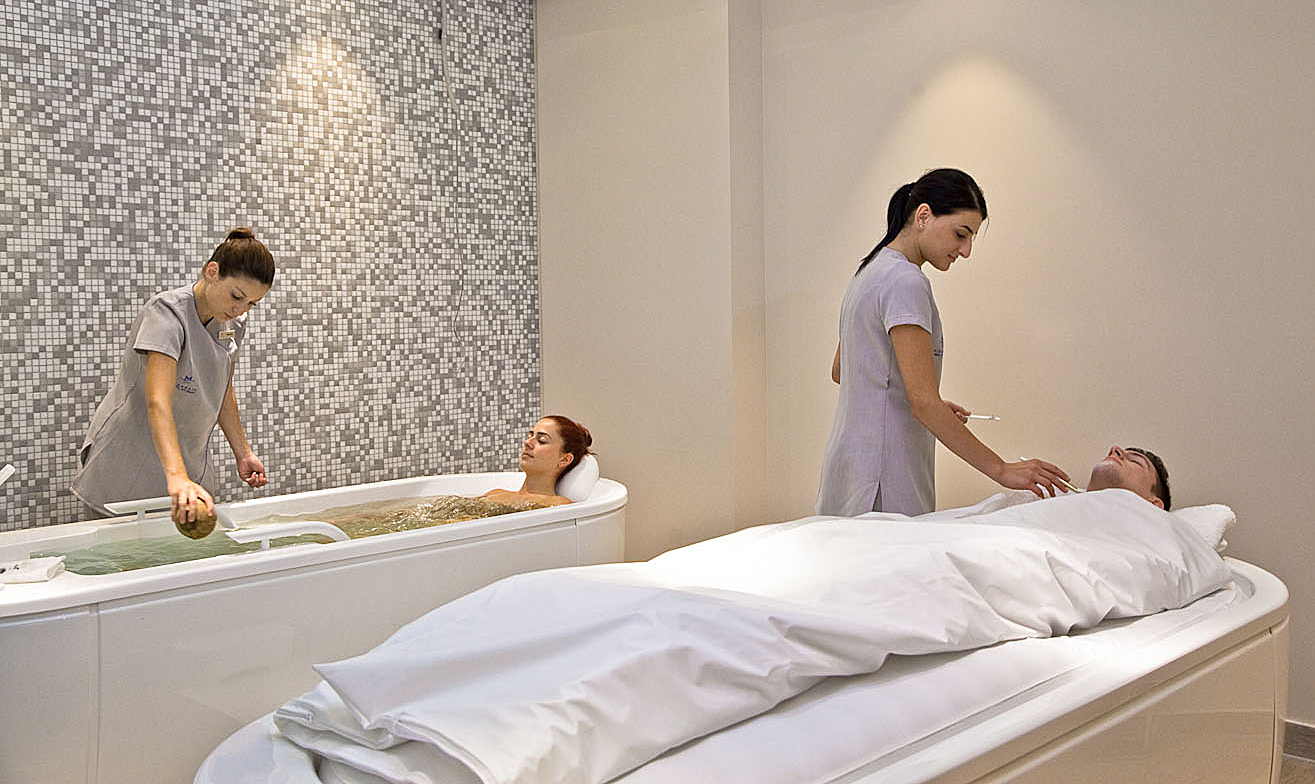
Users can select from a menu of 10 pre-set underwater massages
ARTOFCRYO.COM
Vaultz
• The Vaultz series by artofcryo.com includes three different types of whole-body cryotherapy chambers. Treatment times are individually set via a unique software system and usually last around three minutes.
• Benefits include enhancing immunity, anti-ageing, muscle rehabilitation and stress relief.
• It’s considered a COVID-safe treatment as it’s touchless and guests can wear protective masks and gloves and are provided with shoes so they don’t come into contact with surfaces.
• What’s more, viruses do not like the extreme cold temperatures (-110˚C) of cryotherapy.
• The stainless steel floor of the chambers are capable of withstanding hospital-grade disinfectant.
• Sessions cost £80 (€89, US$101), but guests can have up to five daily and artofcryo.com estimates spas could offer 50 treatments a day in a single chamber under corona-friendly restrictions. Or it says up to 200 sessions could take place a day in its multi-room vario Vaultz model under normal circumstances.
• The single chamber has a base-line price of £100,000 (€110,886, US$126,869).
Gharieni
MLX i³Dome
• Gharieni’s new MLX i³Dome combines three therapies – far infrared (FIR) with plasma- and light-therapies (PLT) – to offer a touchless experience. •
Clients lie underneath the dome which exposes them to long-wave infrared rays while the PLT device rests above their head acting on the skin. •
Benefits include revitalised skin, increased collagen production and boosted metabolism. •
Gharieni recommends offering 30- or 60-minute treatments, costing €30 (US$34, £27) and €50 (US$57, £45) respectively. •
The company calculates 15 minutes for cleaning which involves disinfecting the dome, head device and lying surface. •
Gharieni also suggests incorporating an extra 15 minutes for seating and programming, meaning 30-minute treatments require between 45 minutes to an hour. In this case, if a spa was open for nine hours, it could offer 10 treatments a day. •
The cost of a MLX i³Dome, including the PLT device, begins at €31,890 (US$36,494, £28,840).
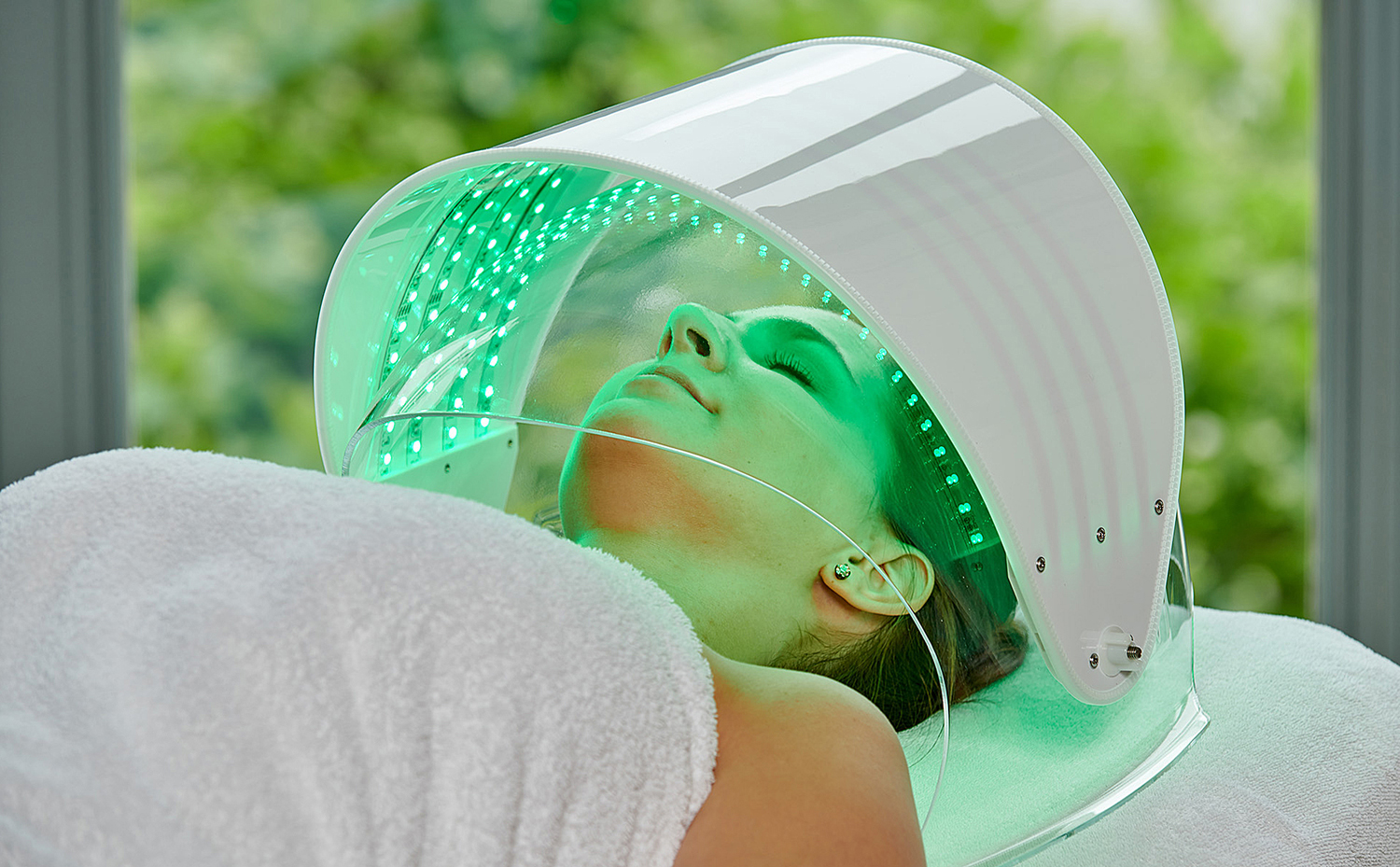
The dome combines FIR, plasma- and light-therapies to revitalise the skin and boost metabolism / PHOTO: Gharieni
Himalayan Source
Private halotherapy experience
• Himalayan Source says treatment rooms can be transformed into private halotherapy experiences by installing a glowing Himalayan salt wall and halogenerator. •
It suggests spas charge US$60 (€39, £36) for a 45-minute treatment where guests relax on a massage table while breathing in the salt particles. •
Studies show halotherapy can relieve symptoms of upper and lower respiratory conditions and improve the skin. •
It also has anti-microbial and anti-bacterial properties which Himalayan Source claims will help protect treatment rooms from viruses. •
Cleaning takes 15 minutes and requires massage tables to be disinfected and disposable sheets on the bed to be replaced between sessions. •
The company estimates that if a spa opened for nine hours a day, it could book nine treatments which could be topped up with yoga, chromotherapy, far-infrared heat mats or cryofacials. •
A full wall and a halogenerator for a medium-size treatment room costs US$10,000 (€8,730, £7,943) to US$14,000 (€12,222, £11,119), dependant on size.
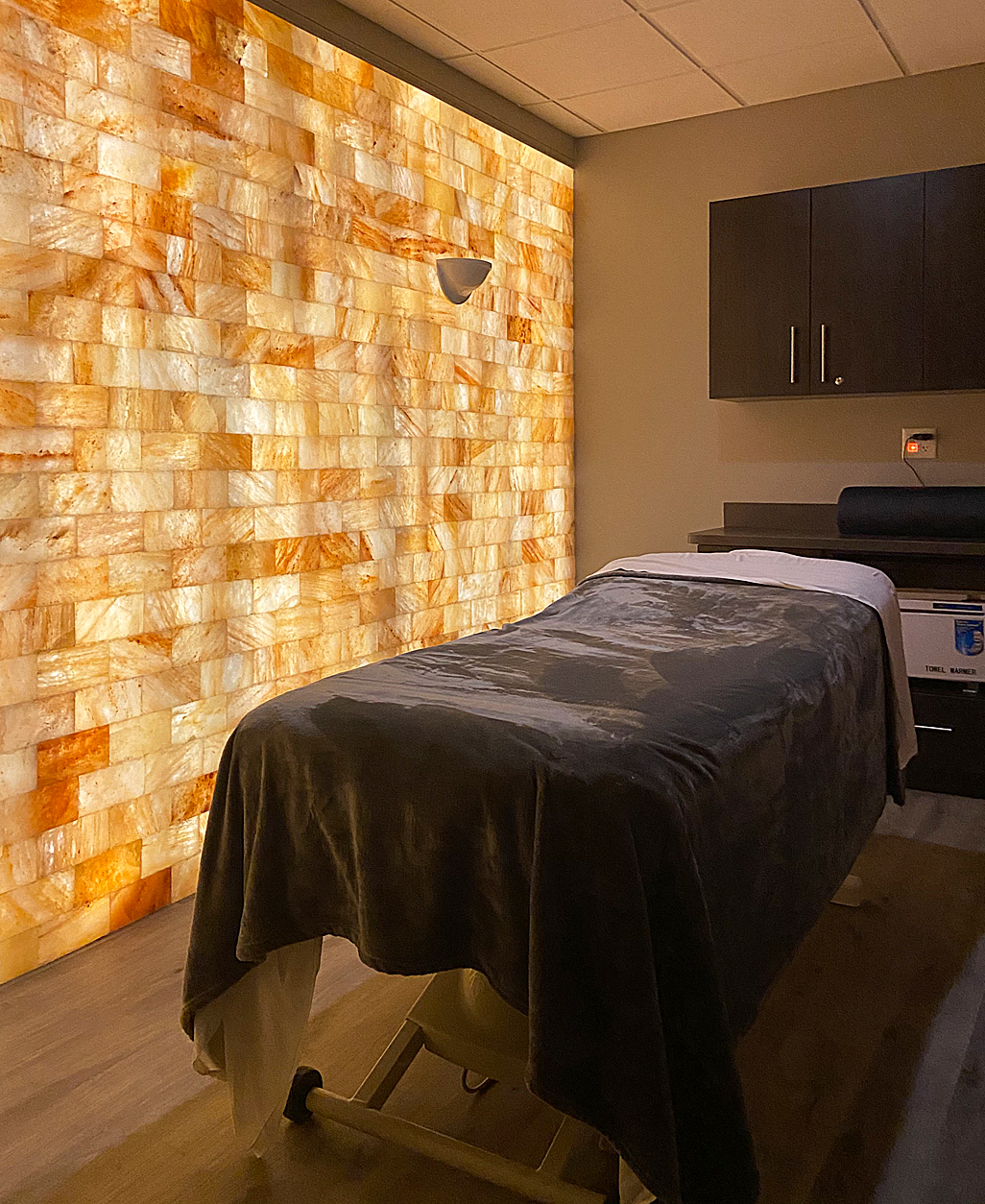
Rooms can be turned into private halotherapy experiences with a salt wall and halogenerator / PHOTO: Himalayan Source - Del-Ray
|
|
 |
| Originally published in Spa Business 2020 issue 3
|
|
 |
|
